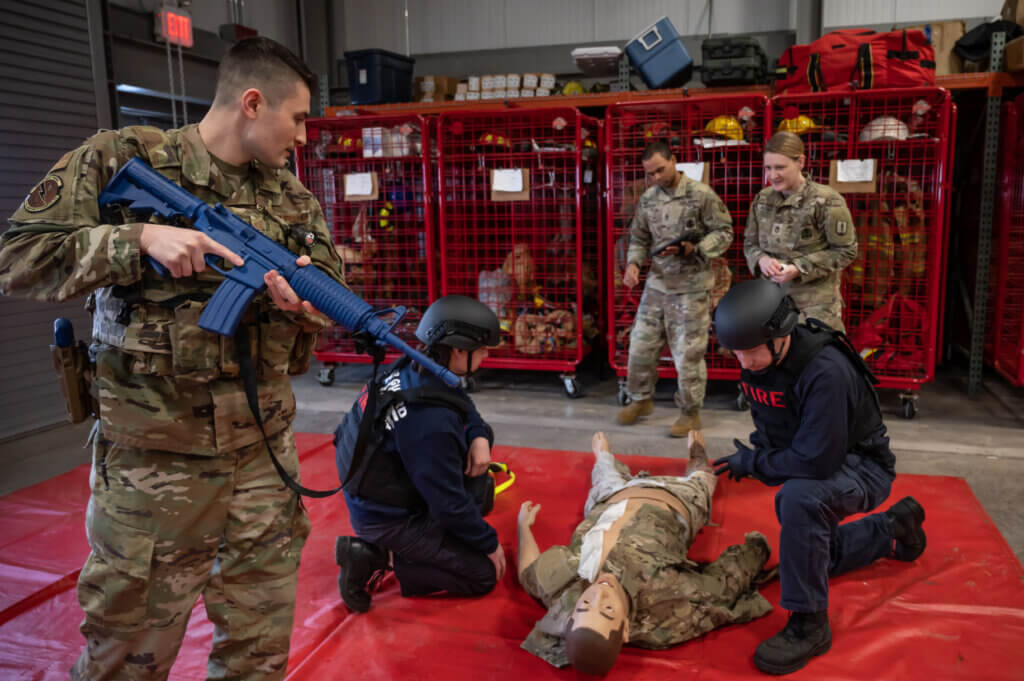Members of Connecticut Air National Guard Fire and Emergency Services, alongside members of the 103rd Medical and Security Forces Squadrons, refreshed their skills in Tactical Combat Casualty Care (TCCC).
TCCC is the foundation of first-aid skills and life-saving techniques for service members. While the TCCC course typically simulates trauma care in a combat zone, the 103rd has adapted the course toward aiding casualties in active shooter scenarios.
“We were asked by the firefighters here to come down and give a broad overview of [TCCC] or tactical combat casualty care, said Army Sgt. 1st Class Megan Authier, Course Manager and Training and Readiness NCO at the 169th Regional Training Institute, Camp Nett, Connecticut. “It is part of their bigger picture of active shooter drills or an active shooter response.”
In combat scenarios, service members expect to engage a potentially deadly threat in a hazardous environment. By contrast, active shooter incidents are unpredictable and typically occur in locations that are considered safe. Adapting the TCCC course to simulate active shooter scenarios enables Connecticut Guard first responders to prepare for conditions that they may face while providing emergency services in their local communities.
“It’s extremely impactful and enhances the base’s readiness to continue our mission and be prepared for anything that’s thrown at us,” said Anthony Authier.
The training is also meant to encourage teamwork among training participants from various units.
“With an [active shooter situation], having the security forces understand what the fire department’s role is, and for the fire department to understand what security force’s role is, and how those two both come together in a unified function to neutralize that emergency, is beneficial across the board,” said Anthony Authier, Crash Rescue Fire Captain with Connecticut Air National Guard Fire and Emergency Services.
During TCCC training, course participants provide aid using the “MARCH” acronym:
- Massive hemorrhage
- Airway
- Respirations
- Circulation
- Head injury/hypothermia
“What MARCH does, is it gives the parameters and the priority of treatment in order to work in the confines of a scene that isn’t necessarily safe,” said, Megan Authier. “Identifying and treating those life threats in a very specified order, or priority, improves your patient outcome overall.”
Connecticut Air National Guard Fire and Emergency Services plans to hold the TCCC course more frequently and open the training to their mutual-aid partners, who may not be accustomed to providing care in hostile, life-threatening conditions.
“The purpose of this training is to provide that bridge, to go from a scene is safe, normal, EMS posture, to providing care in a more tactical environment, where we can render aid immediately to patients that need it, even though there may be a threat element,” said Anthony Authier.

